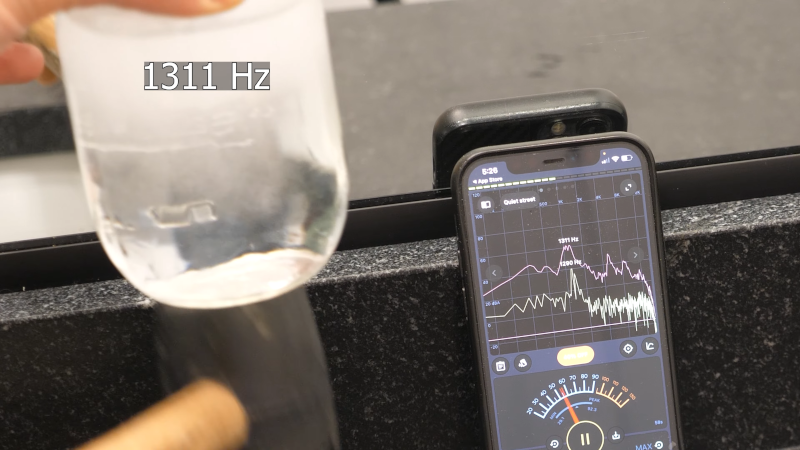This is the time of year when people in the Northern Hemisphere like to enjoy hot beverages like hot chocolate. [The Action Lab] uses hot chocolate to demonstrate an odd acoustic effect. Tapping a container of hot chocolate — or even just hot water — will make a sound at a certain frequency. But if you keep tapping, the frequency of the sound will gradually increase. Don’t know why? Don’t worry, neither did scientists until around 1980.
The secret is bubbles and the speed of sound through air vs a liquid. The speed of sound in the liquid and the height of the liquid in the cup set the frequency. However, the speed of sound changes based on the bubbles, which alters the frequency.
This is one of those subtle things you probably never noticed and, if you did, you probably didn’t think much about. Still, there’s a physics lesson around every corner. Besides, this is one experiment that you can end with a tasty beverage. You only need some mix and your ears or, if you prefer, a cell phone app to read audio frequencies. You can also just use hot tap water, but what fun is that?
Usually, we are talking about bubbles in the context of futuristic display devices. Then again, not always.
















I have been baffled by this phenomenon for years. I actually just showed it to my kids this weekend when we busted out the hot chocolate for the season. Excited to share the explanation!
And i always thought it had something to do with warming up of the cup you poured the liquid in…
I didn’t checked the video for the moment. But I really thought the same for years!!!
You’re not the only one.
Finally, evidence that I’m not insane (as others have implied when I’ve tried to talk about it) for being curious about the sound of hot chocolate being stirred. I have also always wondered why it makes a different sound (more like a “plasticky” tapping/scraping sound vs. the “dinging” you’d hear while stirring a coffee/tea) when being stirred. People I’ve pointed it out to have no idea what I’m talking about!
The usual reaction I got is “yeah, it sounds different, will you please stop???”
I have noticed this exact effect when using merely “warm” but not quite “hot” tap water to dissolve my HMB and creatine supplements (as warm water does a much better job than cold). It takes a long time to fully dissolve the powder, but I can usually tell It’s good once the sound hits a certain pitch 😂
I was working for a guy for six months that was trying to measure the ratio of air to liquid in a surge suppression tank. I was able to take a frequency measurement 4 times a second and discovered this effect during my testing. The guy thought I was crazy so he told the the head of engineering to go blast air into the tank and sure enough you could see the frequency change when injecting air into the liquid. I was laid off the next week. However, I knew that it was a bad match for me after an earlier meeting where I told him that when we hit the tank there are a lot of high frequency over tones that I though were causing aliasing and that I needed to add a low pass filter before the ADC. He told me that I didn’t need to do all that and I should just hit the tank harder. :-|
Just wanted to say good for you. There are better ways to spend your time than convincing old dogs proper habits.
At last! An answer! I have also been wondering this for years. I’d even gone as far as eliminating thermal effects in the mug as a possible cause by testing it with a cold mug from the cupboard vs. one hot from the dishwasher and saw no difference in the rising pitch. I was stumped until now.
You have made my day. Thanks
The effect is much much clearer when you stand the spoon in the middle of the cup and tap the bottom of the cap with it.
I wondered for years where that comes from…
*the bottom of the CUP.
Rumors are there will be an edit function for christmas….
Which Christmas?
That’s the way I discovered it!
You gonna try and tell me that was not a bong around the 4 minute mark? Nice.
I have never noticed. Now, I will check this out and see if it works with a bottle of pop.
I’ve noticed this in the past when stirring lemonade mix into water and wondered why it happened. Glad to see others had the same curiosity!
I am so glad this article was written! I have have wondered about this oddity for years. I would mention it to people and get and array of responses, generally mocking placation. Anyways, I’m happy to know I’m not just some weirdo. Clearly other commenters have had similar experiences. Now I can finally explain the science to the few people that entertained my curiosity.
Same thing happens when you add coffee to whipped cream or ice cream to coffee. As the bubbles rise to the surface, the frequency gets higher.